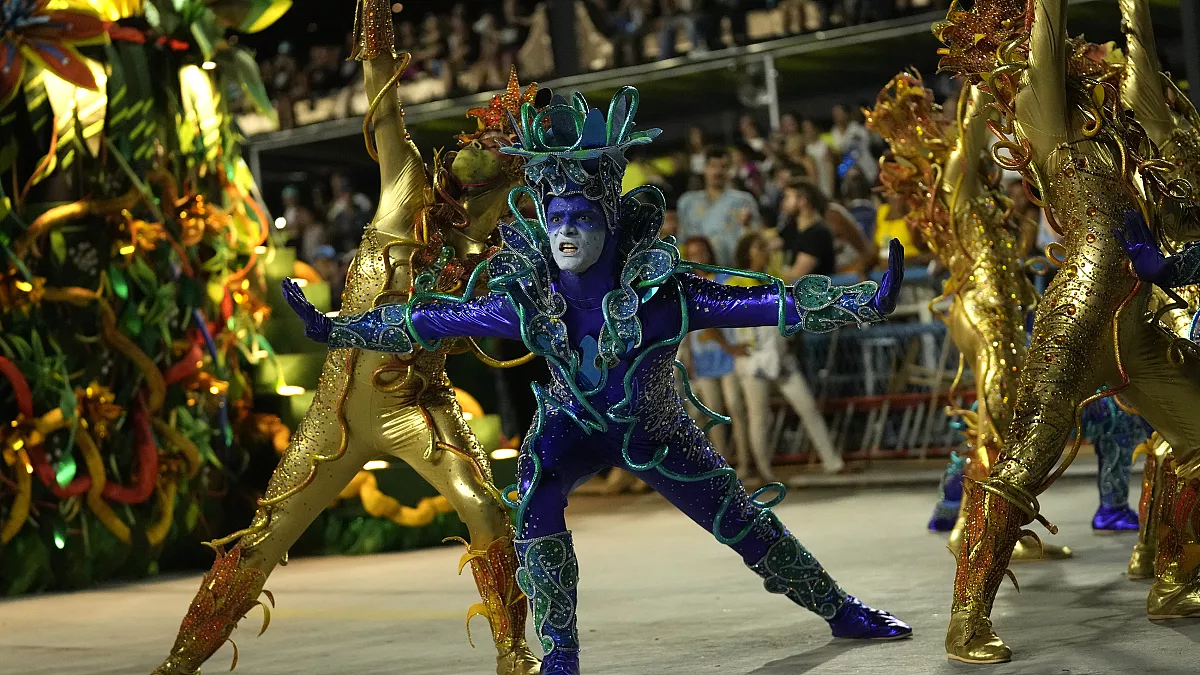Traveling is not just about seeing landmarks—it’s about diving headfirst into the living pulse of a city. And there’s no better way to do that than by celebrating a festival. Festivals reveal the heart and soul of a place, shining light on its traditions, passions, and people.
From vibrant parades to mesmerizing rituals, quirky customs to grandiose celebrations, festivals are immersive cultural capsules that turn cities into epicenters of joy, reflection, and togetherness. Whether you’re a seasoned traveler or a curious explorer, timing your visit to coincide with a city’s signature festival can transform your trip into an unforgettable experience.
Here are seven festivals around the world that are truly worth traveling for — where every moment bursts with color, music, dance, food, and story.
1. Rio Carnival — Rio de Janeiro, Brazil
Why It’s Special
Rio Carnival is arguably the world’s most famous festival, a spectacular explosion of samba rhythms, dazzling costumes, and citywide euphoria. Held annually before Lent, it’s a feast for the senses and a cultural cornerstone for Brazilians.
What to Expect
- Samba Parades: The highlight is the Samba School parades at the Sambadrome, where elaborate floats and thousands of dancers compete in dazzling displays of choreography and storytelling.
- Street Parties (Blocos): Outside the Sambadrome, hundreds of neighborhood blocos (street parties) pulse through the city, welcoming anyone to dance and celebrate.
- Colorful Costumes: Glitter, feathers, and beads dominate every corner, showcasing Brazilian artistry and pride.
Travel Planning Tips
- When to Go: Usually held in February or early March; check the exact dates yearly.
- Where to Stay: Book accommodations in advance, especially near Copacabana or Ipanema beaches, or in the city center.
- Tickets: Samba Parade tickets can sell out fast—buy early from official sources or trusted resellers.
- Safety: Stay aware of your belongings during street parties; stick to well-lit areas after dark.
- What to Pack: Lightweight, colorful clothing; comfortable shoes; sunscreen and hydration essentials.
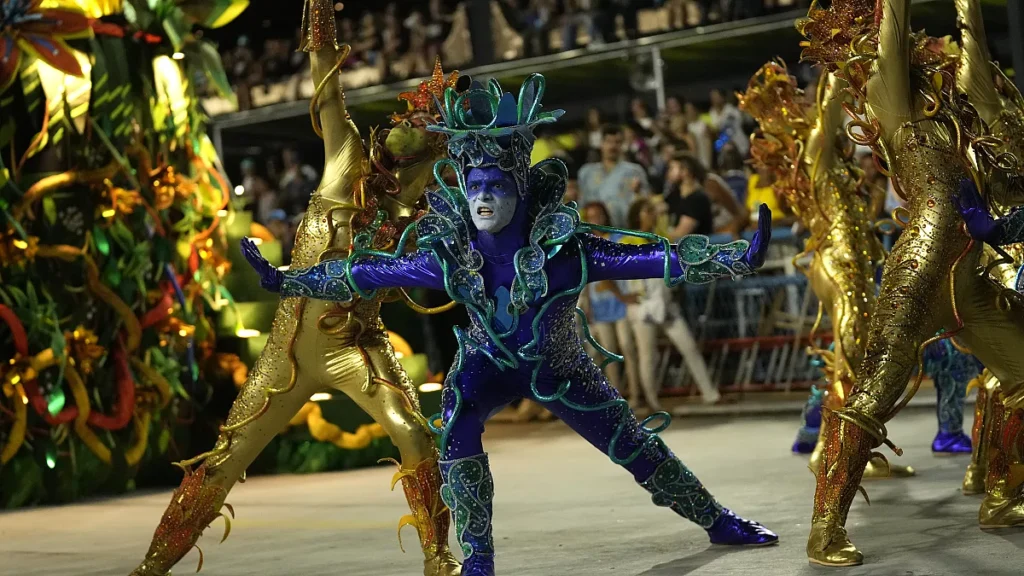
2. Diwali — Jaipur, India
Why It’s Special
Known as the Festival of Lights, Diwali transforms Jaipur into a glowing wonderland. The festival marks the victory of light over darkness and good over evil, celebrated with fireworks, lamps, and sweets.
What to Expect
- Citywide Illumination: The pink city’s palaces, markets, and streets are decorated with thousands of diyas (oil lamps) and fairy lights.
- Fireworks & Festivities: Families burst crackers, exchange gifts, and offer prayers to Lakshmi, the goddess of wealth.
- Traditional Sweets & Markets: Stalls overflow with mithai (Indian sweets) and handcrafted gifts, perfect for indulging or souvenir shopping.
- Cultural Performances: Watch traditional folk dances and music in public squares.
Travel Planning Tips
- When to Go: Late October to early November, lasting five days; the exact date shifts annually based on the lunar calendar.
- Where to Stay: Opt for heritage hotels or guesthouses within the old city to soak up the ambiance.
- Local Etiquette: Dress modestly, respect local customs during rituals, and ask before photographing families.
- What to Pack: Bright-colored traditional attire if you want to join in; earplugs for fireworks; sweets to share.
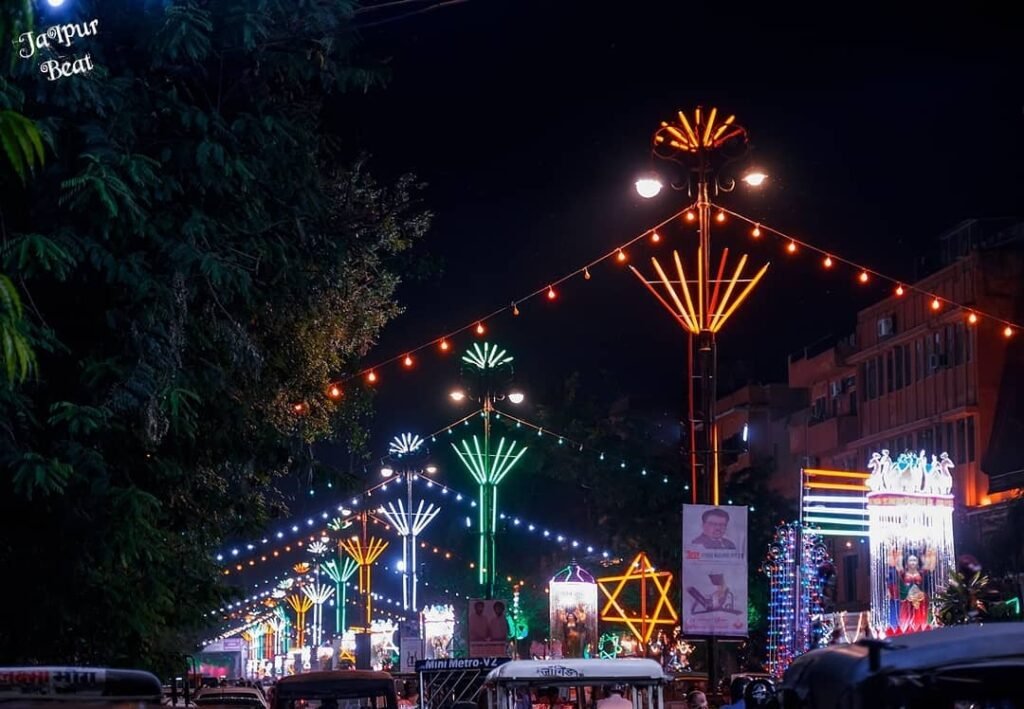
3. La Tomatina — Buñol, Spain
Why It’s Special
La Tomatina is the world’s biggest food fight—a messy, joyful tradition held on the last Wednesday of August that turns the town of Buñol into a sea of red tomatoes.
What to Expect
- Tomato Fight: Thousands gather to toss over 100 tons of ripe tomatoes in a 60-minute epic battle.
- Pre-fight Festivities: Parades, music, and fireworks set the tone for this unusual festival.
- Post-fight Cleanup: The streets flood with water hoses, and the town’s spirit shines through communal cleanup efforts.
- Local Flavors: Sample traditional paella and sangria at surrounding eateries before or after the event.
Travel Planning Tips
- When to Go: Last Wednesday in August every year.
- Where to Stay: Nearby Valencia is a popular base, but Buñol has small hotels and guesthouses if you prefer close proximity.
- What to Bring: Old clothes and goggles; gloves for tomato protection; waterproof phone case.
- Rules: Squash tomatoes before throwing to avoid injury; no other projectiles allowed.
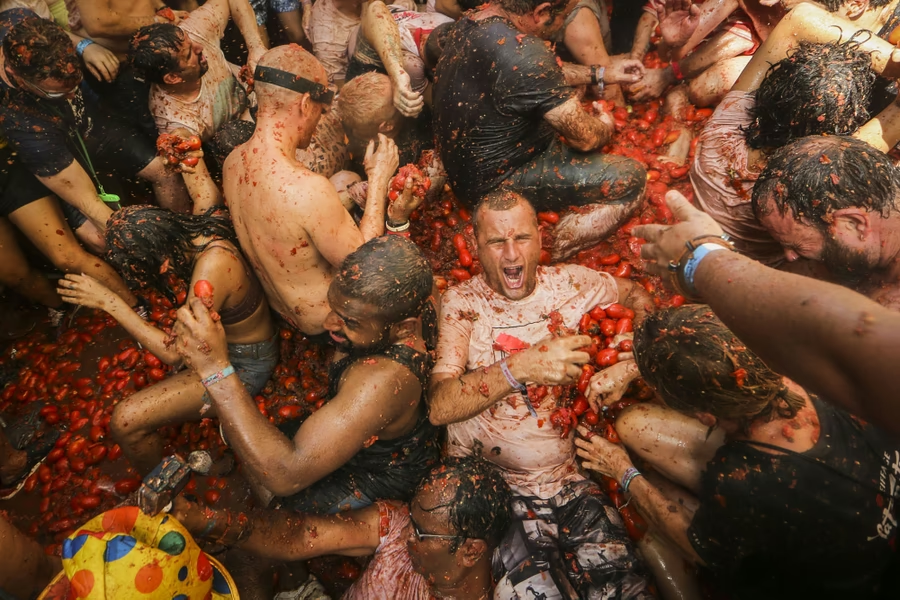
4. Harbin International Ice and Snow Sculpture Festival — Harbin, China
Why It’s Special
This winter spectacle in northeastern China is the world’s largest ice and snow festival. It lights up the dark, cold months with massive illuminated ice sculptures and activities.
What to Expect
- Giant Ice Castles: Enormous, brightly lit ice palaces and sculptures crafted with incredible artistry.
- Ice Sports: Ice skating, sledding, ice biking, and snow sculpture competitions keep visitors active.
- Cultural Shows: Traditional Chinese music and dance performances amid the snowy backdrop.
- Night Illumination: The sculptures glow with millions of LED lights, creating a magical atmosphere.
Travel Planning Tips
- When to Go: January to February; best visited early January when sculptures are freshest.
- Where to Stay: Harbin city center offers warm hotels; some resorts provide close access to festival grounds.
- Clothing: Dress in layers with thermal underwear, heavy coats, hats, gloves, and insulated boots.
- Tickets: Purchase in advance for popular exhibits; many outdoor displays are free.
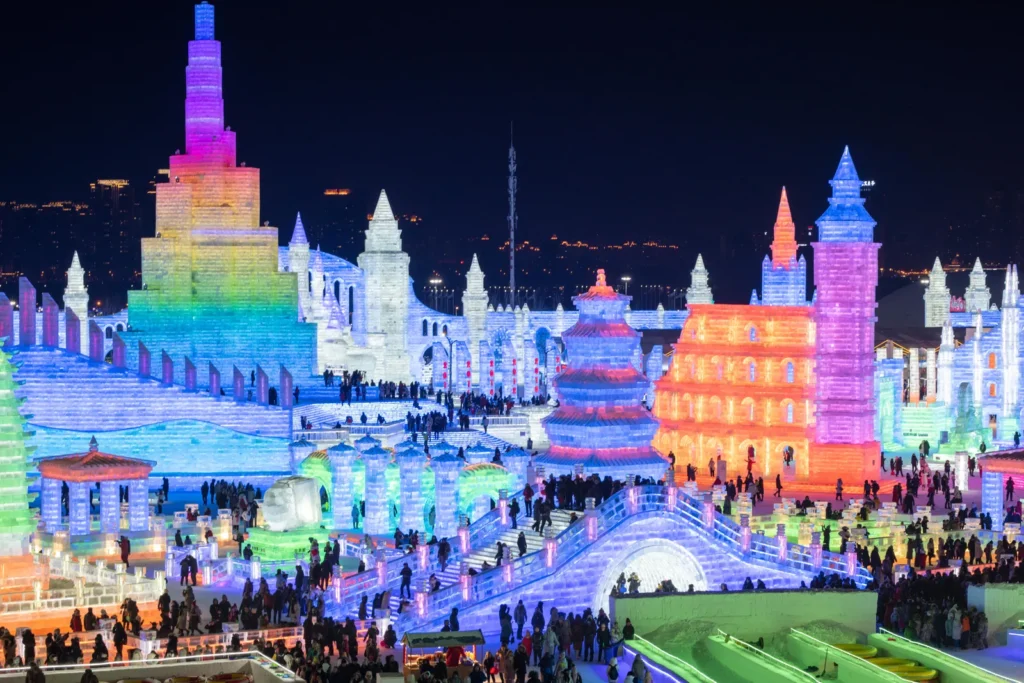
5. Edinburgh Fringe Festival — Edinburgh, Scotland
Why It’s Special
The Edinburgh Fringe is the largest arts festival in the world, transforming Scotland’s capital every August into a sprawling stage of comedy, theater, music, and avant-garde performances.
What to Expect
- Thousands of Shows: From street performers and small venues to large theaters, there’s something for every taste.
- Vibrant Street Life: The Royal Mile becomes a bustling hub of buskers, artists, and festival-goers.
- Diverse Arts: Comedy legends, experimental theater, children’s shows, dance, and more take center stage.
- Atmosphere: A blend of lively crowds, late-night pubs, and international visitors create a unique energy.
Travel Planning Tips
- When to Go: Entire month of August annually.
- Where to Stay: Book early—accommodations fill up fast; consider nearby towns with good transit links.
- Budget: Many shows offer pay-what-you-can or free entry; advance booking recommended for popular acts.
- Extras: Pick up a Fringe program guide for daily schedules.
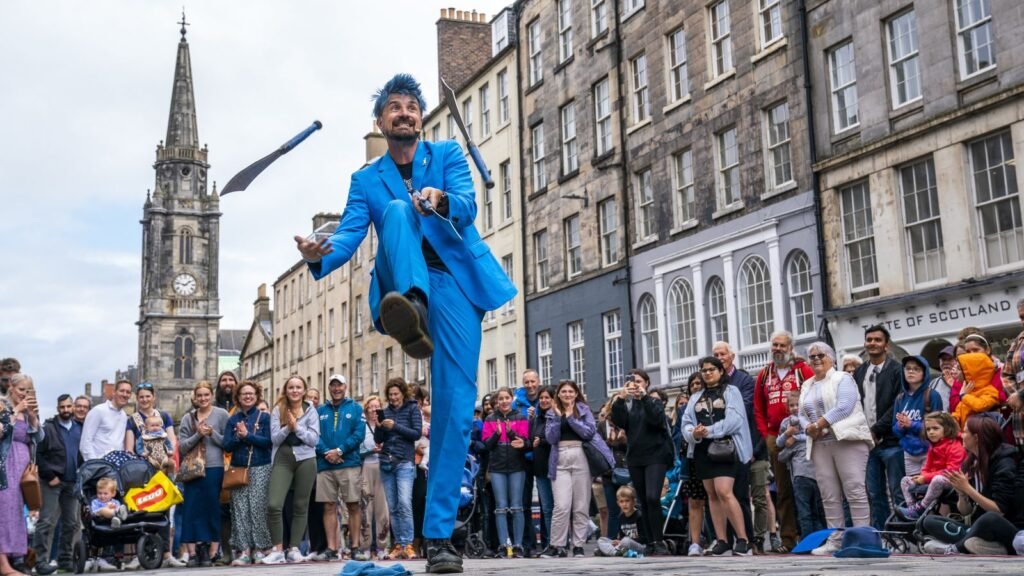
6. Day of the Dead (Día de los Muertos) — Oaxaca, Mexico
Why It’s Special
Día de los Muertos is a vibrant, heartfelt festival honoring ancestors through joyful remembrance, combining indigenous rituals and Catholic influences.
What to Expect
- Colorful Altars: Families build elaborate ofrendas (altars) adorned with marigolds, candles, photos, and favorite foods of the departed.
- Street Parades: Participants paint faces like skulls, don traditional attire, and march through lively streets.
- Markets & Food: Street markets bustle with pan de muerto (special bread), mole sauces, and local crafts.
- Night Vigils: Cemeteries fill with families sharing stories, music, and food around graves.
Travel Planning Tips
- When to Go: November 1st and 2nd annually.
- Where to Stay: Oaxaca’s historic center offers charming hotels and easy access to celebrations.
- Respect: Approach celebrations with sensitivity; ask permission before photographing altars or family gatherings.
- Extras: Join guided tours to understand the cultural significance and visit nearby artisan villages.
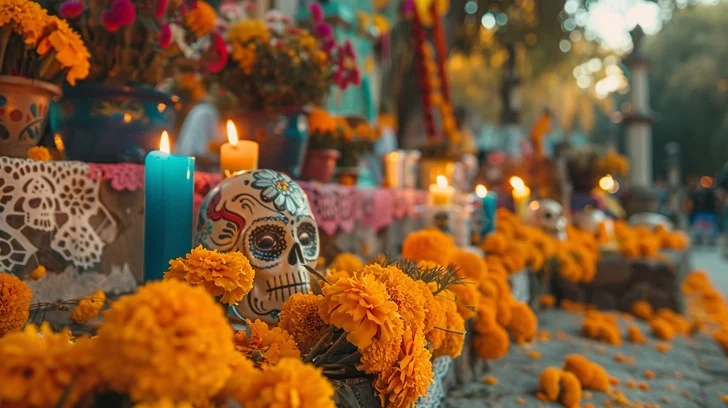
7. Haro Wine Festival — Haro, Spain
Why It’s Special
Known as “La Batalla del Vino” (The Battle of Wine), this quirky festival in Spain’s Rioja region celebrates wine and community with a playful wine-throwing battle.
What to Expect
- Wine Fight: Participants douse each other in red wine in a joyous, muddy wine battle outside Haro’s town square.
- Parades & Music: Traditional Basque music and dances accompany the celebrations.
- Gastronomy: After the fight, enjoy Rioja’s famous wines and local dishes like lamb and tapas.
- Spiritual Element: The festivities honor San Pedro, with a morning mass and procession.
Travel Planning Tips
- When to Go: June 29th, St. Peter’s Day.
- Where to Stay: Book in nearby Logroño or Haro well in advance.
- What to Bring: Old clothes and waterproof shoes; consider goggles and hats.
- Clean-up: There are public showers and wine baths to clean off afterward!

Why Festivals Are the Ultimate Travel Experience
- Connect with Culture: Festivals encapsulate centuries of history, faith, and traditions in one immersive event.
- Meet Locals: Shared celebration breaks barriers and invites interaction with residents.
- Unique Memories: Stories and sensory experiences from festivals stay with you long after the trip.
- Photography & Storytelling: The colors, costumes, and rituals are a dream for travelers who want authentic narratives.
General Festival Travel Tips
- Plan Early: Festivals attract crowds and book up fast—secure your flights and lodging months in advance.
- Pack Smart: Check weather and event-specific needs (e.g., protective eyewear for La Tomatina, thermal layers for Harbin).
- Stay Open-Minded: Festivals might challenge your cultural norms—embrace with respect and curiosity.
- Hydrate & Rest: With so much activity and excitement, keep hydrated and get rest to savor every moment.
- Capture but Don’t Distract: Photos are great, but immerse yourself fully in the experience rather than seeing everything through a screen.
Final Thoughts
From the pulsing samba beats of Rio to the glowing diyas of Jaipur, from the messy tomato battles of Buñol to the ethereal ice castles of Harbin, festivals are windows into the soul of cities. They offer stories, connections, and emotions that no guidebook can match.
Next time you plan your travels, sync your itinerary with a city’s most vibrant celebration — and watch your journey transform into a festival of the senses.

